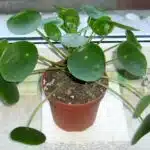Pothos plants, also commonly known as Devil’s Ivy or Epipremnum aureum, are a popular houseplant that is easy to grow and propagate. These beautiful and versatile plants have become a staple in many households, as they require minimal care and add lush greenery to any space. Propagating pothos plants is a great way to expand your collection or share the joy of gardening with others, and it’s an easy process that can be done with just a few simple steps.
As a horticulturalist, I understand the importance of propagating plants for both personal enjoyment and community benefit. By learning how to propagate pothos plants, you can not only increase your own plant collection but also share the beauty of these plants with friends and family. In this article, we will explore different methods of propagation for pothos plants, including stem cuttings and water propagation. Whether you’re a seasoned gardener or new to the world of plant propagation, this guide will provide you with all the information you need to successfully propagate pothos plants at home.
Overview Of Pothos Plants
Once upon a time, pothos plants were considered as the quintessential houseplants, and they remain popular up to this day. Pothos have earned their reputation for being tough, adaptable, and low maintenance. These plants are native to French Polynesia and South-East Asia but have now been widely cultivated in different parts of the world.
Pothos plants come in a variety of colors, patterns, and leaf shapes. The most common varieties include Golden Pothos, Marble Queen Pothos, Jade Pothos, Neon Pothos, and Cebu Blue Pothos. Each variety has its unique features that make it stand out from the rest. For instance, Golden Pothos is known for its golden-green leaves with variegated streaks of yellow while Marble Queen has creamy-white leaves with green edges.
Benefits of having pothos plants in your home are numerous. Not only do they purify the air by removing toxins such as formaldehyde and benzene from the environment, but they also add a touch of elegance to any room. Additionally, they require minimal care and can thrive in low light conditions making them ideal for people who are not experienced gardeners or those living in apartments with limited natural light sources.
Benefits Of Propagating Pothos Plants
There are many benefits to propagating pothos plants. Firstly, propagating allows you to create new plants for yourself or to give away as gifts. It is a cost-effective way to expand your collection without having to purchase new plants. Secondly, propagating can help rejuvenate an overgrown or leggy plant by encouraging new growth and branching. This can result in a fuller and healthier-looking plant. Lastly, propagating allows you to experiment with different propagation techniques and learn more about the plant’s biology.
To successfully propagate pothos plants, it is essential to use the right techniques. There are several approaches that you can take, such as stem cuttings, division, and layering. Stem cuttings are the most common method and involve taking a cutting from the parent plant and rooting it in soil or water. Division involves separating the parent plant into smaller sections that each have their own root system. Layering involves creating a new plant from an existing branch while it is still attached to the parent plant.
If you’re interested in propagating pothos plants, there are several benefits and techniques worth considering. By creating new plants through propagation, you can expand your collection of greenery without breaking the bank. Additionally, experimenting with different propagation techniques can be a fun way to learn more about these versatile plants. In the next section, we will discuss when it’s best to propagate pothos plants so that you can get started on your propagation journey!
When To Propagate Pothos Plants
Like a skilled musician playing the perfect tune, propagating pothos plants requires finesse and attention to detail. Knowing the best propagation techniques is essential for creating new, healthy plants that will thrive in their environment. But when is the ideal time for propagation? Let’s explore further.
The best propagation technique for pothos plants involves stem cuttings placed in water or soil. Cuttings should be taken from healthy, mature plants with at least two leaves and one node. The cutting should be about 4-6 inches long and cut at a 45-degree angle just below a node. Once cut, remove any lower leaves to avoid them rotting in water or soil.
When it comes to timing, the ideal time for propagation is during spring or early summer when the plant is actively growing. However, you can propagate pothos plants all year round as long as they are kept in a warm and humid environment. With patience and care, your propagated pothos plant will soon begin to grow roots and develop into a beautiful new addition to your collection.
| PROS | CONS |
|---|---|
| Easy to propagate | May take longer to establish |
| Can create multiple new plants from one parent plant | Risk of overwatering if not careful |
| Increases diversity in your collection | Requires patience while waiting for roots to form |
As horticulturalists, we understand that choosing the right tools for propagation is crucial for success. In the next section, we will discuss which tools you need and how to use them effectively to ensure that your pothos plant propagates successfully.
Choosing The Right Tools For Propagation
Propagation is a process of growing new plants from existing ones. To ensure the success of propagation, it is important to choose the right tools and equipment. For beginners, it is essential to have the right propagation tools before starting the process. Here are some tips on choosing the right propagation vessels and tools for beginners.
Choose propagation vessels that are appropriate for your plant: Different plants require different types of containers for successful propagation. Pothos plants can be propagated in jars or bottles filled with water or in soil-filled pots.
Use clean tools: Cleanliness is crucial when propagating plants as it reduces the risk of spreading diseases between plants. Make sure to use clean pruning shears, scissors, or knives when taking cuttings.
Consider using rooting hormone: Rooting hormone can improve the chances of successful propagation by encouraging root growth on cuttings.
Choose appropriate lighting: Proper lighting is crucial in successful plant propagation. Ensure that your chosen location has enough natural light or consider using grow lights if natural light is not sufficient.
Choosing the right tools and equipment will help make your pothos plant propagation journey easier and more successful. In the next section, we’ll discuss how to prepare your pothos plant for propagation so you can get started on growing new plants!
Preparing Your Pothos Plant For Propagation
Did you know that pothos plants are one of the easiest houseplants to propagate? With the right techniques and plant maintenance tips, you can grow a new pothos plant from an existing one without buying new seeds or plants. In this section, we will discuss how to prepare your pothos plant for propagation.
Before starting the propagating process, it is important to make sure your pothos plant is healthy and well-maintained. This includes watering it regularly, providing adequate sunlight exposure, and inspecting it for pests or diseases. Additionally, pruning your plant can help stimulate growth and encourage new roots to form in the propagation process.
To prepare your pothos plant for propagation, you will need to select a healthy stem with at least two leaves on it. The stem should be long enough to be cut into smaller sections that can each produce a new plant. Once you have selected the stem, use sharp pruning shears to make a clean cut just below a node where leaves are attached. Remove any excess leaves from the bottom half of the cutting and place it in water or potting soil to begin rooting.
| Propagating Techniques | Plant Maintenance Tips |
|---|---|
| Stem cuttings | Regular watering |
| Division | Adequate sunlight exposure |
| Air layering | Pruning for growth |
With these preparation tips in mind, you can successfully propagate your pothos plant using various techniques such as stem cutting propagation method.
Stem Cutting Propagation Method
After preparing your pothos plant for propagation, the next step is to choose a propagation method. One popular method is stem cutting propagation, which involves taking a cutting from the mother plant and growing it into a new individual. This method is relatively easy and can be done year-round.
To propagate succulent plants, another option is the aeroponic propagation method. This involves suspending the cuttings in air and misting them with nutrient-rich water until roots form. This method allows for faster growth and higher success rates compared to traditional soil-based methods. It is also less prone to disease and pests.
When using the aeroponic propagation method, it is important to use clean equipment and sterile water to prevent contamination. Additionally, maintaining appropriate temperature and humidity levels will help ensure successful root development. Once roots have formed, the new plants can be transferred to soil or a hydroponic system for further growth.
Transition: While stem cutting and aeroponic propagation are both effective methods for propagating pothos plants, another popular option is the water propagation method.
Water Propagation Method
With its ease and simplicity, water propagation method is one of the most popular ways to propagate pothos plants. This method involves cutting a stem or leaf from a mature plant and placing it in water until roots develop. Benefits of this method include the ability to observe root growth and overall health of the cutting, as well as the convenience of not needing soil. Additionally, water propagation can be an excellent way to introduce children or beginners to plant propagation.
However, there are also some drawbacks to water propagation. One downside is that pothos plants propagated in water may have weaker root systems compared to those grown in soil. Another drawback is that the cutting may become too accustomed to living in water, making it difficult for it to transition to life in soil once planted. It’s essential to acclimate the plant slowly by gradually introducing it to soil over time.
When comparing water propagation with other methods such as soil and air layering, it is important to consider factors such as time, effort, and success rate. Water propagation tends to be faster than other methods since roots tend to form quickly in water; however, success rates can vary depending on environmental conditions such as light and temperature. Ultimately, choosing the best method will depend on individual preferences and growing conditions.
Moving forward from here into ‘soil propagation method,’ growers can expect additional benefits from this tried-and-true approach for propagating pothos plants.
Soil Propagation Method
- Gathering supplies for soil propagation of pothos plants requires a sharp pair of scissors, potting soil, and a plastic container with drainage holes.
- Preparing the cuttings involves taking a 4-6 inch cutting from an existing pothos plant and removing any leaves from the bottom half of the cutting.
- Planting the cuttings should occur immediately after preparation, by placing the bottom half of the cutting into the soil and lightly pressing the soil around it.
- It is important to water the cuttings after planting and keep the soil moist, but not wet, to encourage root development in the cuttings.
- The container should be placed in a spot with indirect sunlight and warm temperatures, as pothos plants prefer humid, warm, and indirect conditions.
- After a few weeks, the cuttings should begin to develop new growth, indicating that the soil propagation of pothos plants has been successful.
Gathering Supplies
To propagate pothos plants through soil propagation, you will need a few supplies. The first essential item is a potting mix, which should be well-draining and free of pests and diseases. You can find potting mixes at your local garden center or online. Another important supply is a container for the plant cuttings. Choose a container that is wide and shallow to allow for good air circulation around the cuttings. You can use plastic or clay pots, but make sure they have drainage holes.
In addition to the potting mix and container, you will need a sharp pair of pruning shears to take cuttings from the parent plant. Look for pruning shears at your local hardware or garden store or order them online. It’s also helpful to have rooting hormone powder, which can help speed up the process of root development in the cuttings. Rooting hormone powder can be found at most garden centers or ordered online.
Lastly, you may want to consider using a clear plastic bag or plastic wrap to cover the container with the cuttings. This will create a humid environment that promotes root growth but be sure to remove it occasionally to prevent mold growth. Clear plastic bags and wrap are readily available at most grocery stores or online retailers.
In summary, gathering supplies for pothos plant propagation through soil requires potting mix, containers, pruning shears, rooting hormone powder and potentially clear plastic bags or wrap. These items can be found at your local garden center, hardware store or purchased online depending on your preference. With these supplies in hand, you’ll be ready to start propagating pothos plants with success!
Preparing Cuttings
To successfully propagate pothos plants through soil, one of the essential steps to take is to prepare the cuttings properly. Before taking any cuttings from the parent plant, ensure that your tools are clean and sharp. Using a pair of sterilized pruning shears, cut a section of stem approximately 4-6 inches in length. Make sure to include at least two leaves on each cutting.
To encourage successful rooting, it’s important to remove any leaves from the lower part of the stem that will be buried in the potting mix. This is because leaves left below the surface can rot and cause issues with root development. After removing excess leaves, dip the bottom inch of each cutting into rooting hormone powder before placing them into pre-moistened potting mix.
It’s important to note that while you may be tempted to use larger cuttings for faster growth, smaller cuttings tend to have better success rates as they require less energy to produce roots. Once your cuttings are prepared and planted in their containers, water them thoroughly and place them in a bright but indirect light location. With proper care and attention, your pothos plant cuttings should start developing roots within a few weeks!
Planting Cuttings
To continue with the topic of soil propagation for pothos plants, it is essential to discuss the next step – planting cuttings. After preparing your cuttings by using sterilized pruning shears to make a 4-6 inch stem cutting with at least two leaves, and removing any lower leaves that could rot, you are ready to plant. Using rooting hormone powder can increase the chances of successful propagation in soil. Before planting, be sure to moisten the potting mix.
To plant your prepared cuttings, carefully insert them into pre-moistened potting mix until the bottom inch is covered. Firmly press down on the soil around each cutting to ensure they stay in place. Water thoroughly and place your container in a bright but indirect light location. It’s important not to overwater as this can cause the cuttings to rot or develop mold.
If you prefer not to use soil for propagation, another method is propagating in water. This involves placing your prepared cuttings into a jar filled with water and waiting for roots to develop before transferring them to soil. While this method may seem easier initially, it’s important to note that some plants may struggle when transitioning from water to soil. Overall, planting cuttings in pre-moistened potting mix using rooting hormone powder is an effective way of propagating pothos plants through soil.
Common Mistakes To Avoid When Propagating Pothos Plants
Soil propagation method is one of the most common and easiest techniques to propagate pothos plants. This method involves taking a healthy stem cutting from an existing pothos plant and planting it in a pot filled with fresh, well-draining soil. It is important to ensure that the cutting has at least one node or leaf attached to it as this will aid in root development.
However, there are some common mistakes that people make when using the soil propagation method for pothos plants. One of the most common mistakes is overwatering. Overwatering can lead to root rot, which can kill the cutting before it has a chance to develop roots. Another mistake is planting the cutting too deep in the soil, which can also lead to poor root development.
To avoid these mistakes and ensure successful propagation of your pothos plants, here are some tips:
- Use well-draining soil mixtures that allow excess water to drain away from the roots.
- Water sparingly until you see new growth emerging from the plant.
- Keep your cuttings out of direct sunlight as this can cause them to dry out and die.
By following these simple propagation techniques, you can quickly and easily grow new pothos plants from cuttings. However, if you encounter any problems during this process, there are several troubleshooting steps that you can take to identify and resolve issues.
Troubleshooting Propagation Problems
Propagation success can be affected by a number of factors, and troubleshooting problems early on can help ensure that your efforts are not in vain. One common issue is with the cutting itself – it may have been taken from an unhealthy or diseased plant, or it may have been damaged during transport. To avoid this, make sure you take cuttings only from healthy plants, and handle them carefully to prevent any damage.
Another problem that can arise is with the rooting process itself. Cuttings need a warm and humid environment to root successfully, so if your propagation setup is not providing these conditions, your cuttings may struggle to grow roots. To fix this issue, try placing a clear plastic bag over the pot to create a mini greenhouse effect, or consider using a heat mat to keep the soil at the correct temperature.
Finally, some gardeners struggle with keeping newly propagated pothos plants alive once they have been planted in their final location. This could be due to a lack of water or sunlight, or because the plant has been exposed to too much stress during its move. To care for newly propagated pothos plants successfully, make sure you keep them out of direct sunlight and water them regularly (but don’t overwater!). Additionally, try to minimize any changes in their environment for at least a few weeks after transplanting to give them time to adjust.
Moving on to caring for newly propagated pothos plants…
Caring For Newly Propagated Pothos Plants
Newly propagated pothos plants require more frequent watering than more mature plants, as they have less developed root systems.
A balanced, water-soluble fertilizer should be applied to newly propagated pothos plants every two weeks to ensure optimal growth.
When repotting newly propagated pothos plants, use a potting mix that is well-draining and contains organic matter, and select a pot that is slightly larger than the root ball.
In order to properly water newly propagated pothos plants, water thoroughly until the excess begins to drip from the drainage holes, and then empty the drip tray.
Fertilizing newly propagated pothos plants should be done carefully, as too much fertilizer can damage young plants.
Once newly propagated pothos plants have grown beyond the size of their current pot, it is necessary to repot them into a larger container.
Watering
Maintaining a consistent watering frequency is crucial to the propagation success rate of pothos plants. Over-watering or under-watering can cause root rot or dehydration, respectively, which may hinder the growth of the newly propagated plant. It is recommended to water pothos plants only when the top inch of soil feels dry to the touch. This ensures that the plant receives sufficient moisture without being drowned in excess water.
During the initial stages of propagation, misting can also provide additional moisture and promote healthy growth. However, it is important not to over-mist as this can create a humid environment that encourages fungal growth. Using distilled or filtered water can also prevent mineral buildup in the soil, which may affect nutrient absorption by the plant.
Once roots have established and new growth appears, watering frequency can be adjusted accordingly. Pothos plants prefer moist but well-draining soil, so it is important to ensure proper drainage to prevent waterlogged soil. Monitoring soil moisture levels and adjusting watering frequency accordingly can help maintain a healthy and thriving newly propagated pothos plant.
Fertilizing
Fertilizing is an essential aspect of caring for newly propagated pothos plants. As with watering, it is crucial to maintain a balanced nutrient supply to ensure healthy growth and development. Using organic fertilizers can provide the necessary nutrients while avoiding the negative effects of synthetic fertilizers. Organic fertilizers are derived from natural sources and contain a variety of essential minerals, vitamins, and trace elements that are beneficial to plant growth.
The importance of balanced nutrients cannot be overstated when it comes to the health of newly propagated pothos plants. Nitrogen, phosphorus, and potassium are the primary macronutrients required for plant growth, but other micronutrients such as calcium, magnesium, and iron are also vital. A deficiency in any one nutrient can result in stunted growth or discoloration of leaves. Over-fertilization can also cause nutrient burn or toxic buildup in the soil.
When fertilizing newly propagated pothos plants, it is important to follow recommended guidelines for application frequency and dosage. Typically, fertilization is done every 2-4 weeks during the growing season (spring through fall) and less frequently during dormancy (winter). Diluting fertilizer solutions to half strength can prevent over-fertilization while still providing necessary nutrients. By maintaining a balanced nutrient supply through careful fertilization practices, newly propagated pothos plants can thrive and grow into beautiful specimens.
Repotting
Repotting is another crucial aspect of caring for newly propagated pothos plants. As the plant grows, it will eventually outgrow its container and require a larger space to thrive. Repotting involves transferring the plant to a new container with fresh soil to provide additional nutrients and room for growth. Soil preparation is an essential step in this process, as using the right soil mixture can help prevent issues such as overwatering or nutrient deficiencies.
When preparing the soil for repotting, it is important to choose a high-quality potting mix that is well-draining and rich in organic matter. A mixture of peat moss, perlite, and vermiculite can provide the necessary drainage while retaining moisture and nutrients. Additionally, adding compost or other organic fertilizers can contribute to healthy root development and overall plant growth.
To repot a newly propagated pothos plant, carefully remove it from its current container without damaging the roots. Gently loosen any tangled roots before placing them into the new container with fresh soil. Water thoroughly after repotting to help settle the soil around the roots and promote healthy growth. By following these steps for repotting and soil preparation, newly propagated pothos plants can continue to thrive and reach their full potential.
Transplanting Propagated Pothos Plants
Once your pothos plant has been propagated successfully, it is time to transplant it into a more permanent home. There are several potting options available for your pothos plants, including plastic, terra cotta, and ceramic pots. It is important to choose a pot that is appropriate for the size of the plant and allows for proper drainage.
When transplanting your propagated pothos plant, it is also important to consider its lighting requirements. Pothos plants thrive in bright, indirect sunlight but can also survive in low light conditions. If you are placing your new plant in a low-light area, consider using fluorescent lights or grow lights to supplement its light intake.
To ensure the success of your transplanted pothos plant, here are some tips to follow:
- Choose a pot with drainage holes
- Use well-draining soil
- Water regularly but allow the soil to dry out slightly between watering
- Fertilize every 2-3 months with a balanced fertilizer
- Prune as needed to maintain shape and promote growth
By following these tips and taking proper care of your propagated pothos plants, they will thrive and bring joy to both you and those around you. Sharing your propagated plants with others is a great way to spread happiness and encourage others to take up gardening as a hobby.
Sharing Your Propagated Pothos Plants With Others
Once you have successfully propagated your pothos plant, you may want to share it with others who also appreciate the beauty of this resilient plant. Sharing tips on how to care for pothos plants is an excellent way to spread knowledge and promote the importance of green living. You can gift a small pothos cutting along with a care guide that includes information on light, water, and soil requirements.
Plant care gifts are thoughtful presents that show you care about the recipient’s well-being and love for nature. To make a beautiful plant care gift, wrap a small pot filled with soil, fertilizer, and a pothos cutting in attractive wrapping paper or burlap. Add a note card with instructions on how to grow and care for their new pothos plant. This will help ensure the success of their new green companion.
Sharing your propagated pothos plants is an easy way to give back to others while promoting eco-friendliness. By sharing tips and offering plant care gifts, you can help enhance someone’s life by introducing them to the joys of indoor gardening. In our next section, we will explore creative ways to decorate with pothos plants that will add natural beauty to any space in your home or office.
Creative Ways To Decorate With Pothos Plants
Hanging planters are an effective way to display pothos plants in a room. Wall art can be created with pothos plants by mounting them to a wall in a decorative frame. Table arrangements can be made with pothos plants to enhance the look of any room. Fireplaces can be decorated with pothos plants in mantel displays or garlands. Decorating kitchen spaces with pothos plants can be done by using themed containers. Outdoor containers, such as baskets, can be used to display pothos plants on a patio or in the garden.
Hanging Planters
Hanging planters are one of the most popular ways to decorate with pothos plants. These versatile plants can be grown in a variety of different containers, including DIY macrame hangers and wall mounted planters. Hanging pothos plants are perfect for adding a touch of greenery to any room, and they can also help to purify the air in your home.
When it comes to growing pothos plants in hanging planters, there are a few important things to keep in mind. First, it’s important to choose a planter that is large enough for the size of your pothos plant. You’ll also want to make sure that the planter has adequate drainage holes to prevent overwatering. Finally, be sure to place your hanging planter in an area where it will receive plenty of bright, indirect sunlight.
Overall, hanging planters are a great way to add some natural beauty and style to your home decor. Whether you choose a DIY macrame hanger or a wall mounted planter, there are plenty of creative ways to incorporate pothos plants into your space. So why not give it a try and see how these lovely plants can transform your home?
Wall Art
As a horticulturalist, there are various creative ways to decorate your home with pothos plants. Hanging displays using pothos planters are one popular way to add natural beauty and style to your living space. However, another unique way is by incorporating them into your wall art.
Pothos plants can be used to create stunning living wall art that not only adds color and texture but also purifies the air in your home. One approach is by creating a vertical garden by mounting small pots of pothos on a wooden frame or wire mesh. Another option is by hanging a larger planter filled with pothos cuttings on the wall as a statement piece.
When incorporating pothos plants into your wall art, it’s important to consider their needs for light and water. Make sure that the location provides bright, indirect sunlight and that you water them thoroughly but allow the soil to dry out slightly between watering sessions. With these considerations in mind, you can enjoy the beauty of pothos plants as part of your wall decor while improving indoor air quality at the same time.
Table Arrangements
As a horticulturalist, there are numerous ways to creatively incorporate pothos plants into home decor. Aside from hanging displays and living wall art, table arrangements can also be an elegant addition to any living space. Pothos plants can be used as centerpieces or DIY arrangements that are not only visually appealing but beneficial to one’s health.
For centerpiece ideas, pothos cuttings can be placed in small vases or jars and arranged on a decorative tray alongside candles or other greenery. This creates a charming and effortless look that adds warmth and color to any table setting. Additionally, pothos plants can be incorporated into larger floral arrangements to add texture and depth.
DIY arrangements using pothos plants are also an excellent way to bring natural beauty indoors while saving money. For example, by using a moss ball as a base and adding pothos cuttings around it, you can create a unique piece of decor that is both visually stunning and easy to maintain. Another option is by using driftwood or other natural elements as a centerpiece and weaving pothos vines throughout for added interest.
In conclusion, incorporating pothos plants into table arrangements is an excellent way to add natural beauty and purify the air in your home. Whether you choose simple centerpieces or more elaborate DIY arrangements, these versatile plants have the potential to enhance any living space with their vibrant foliage and health benefits.
Conclusion And Final Thoughts
Moving on from decorating with pothos plants, let us delve into the process of propagating these green wonders. Propagation is the process of creating new plants from existing ones. Pothos plants are easy to propagate, making them a popular choice for indoor gardening enthusiasts. There are two ways to propagate pothos plants: through stem cuttings or by dividing the root ball.
Stem cutting propagation involves taking a healthy stem cutting that has at least two leaves and placing it in water until its roots grow. Once the roots have grown, it can be transferred to soil. Dividing the root ball means separating the plant’s roots and stems into smaller sections and replanting them in different pots. Both methods are simple and sustainable ways of increasing your pothos plant collection.
The benefits of indoor gardening extend beyond just having aesthetically pleasing plants in your home; they also improve air quality by absorbing pollutants such as carbon dioxide, formaldehyde, and benzene. Moreover, propagating your own plants reduces the need to purchase new ones, contributing towards sustainability efforts. Pothos plants are particularly advantageous for indoor gardening due to their low maintenance requirements and ease of propagation, making them an excellent choice for beginners looking to start their green journey at home.
Conclusion
The propagation of pothos plants is a simple and rewarding process that can be achieved with just a few basic tools. By propagating your pothos plants, you can not only increase the number of plants in your collection but also share them with others. Propagating pothos plants can be done at any time of the year, but it is best to do so during the growing season when the plant is actively producing new growth.
To begin the process of propagating your pothos plant, you will need to choose the right tools for the job. This includes a sharp pair of scissors or pruning shears, a clean container for rooting, and a well-draining potting mix. Once you have gathered your tools, you can prepare your plant for propagation by taking stem cuttings from healthy sections of the vine.
After taking your stem cuttings, it is important to transplant them into a suitable rooting medium and provide them with proper care until they are established. With patience and diligence, your propagated pothos plants will grow into healthy vines that can be enjoyed for years to come.
In conclusion, propagating pothos plants is an easy and enjoyable way to expand your plant collection while also sharing them with others. With a little bit of knowledge and preparation, anyone can successfully propagate their own pothos plants and enjoy their beauty and benefits both indoors and outdoors. As horticulturalists, we encourage all plant enthusiasts to explore the world of propagation and discover new ways to connect with nature through their own gardening endeavors.
Image Credits
- “Money Plant/ Golden pothos/ Devil’s ivy (Scindapsus aures or Epipremnum aureum)” by Happy Sharry (featured)





























